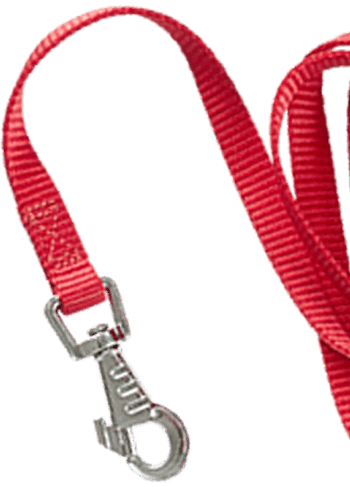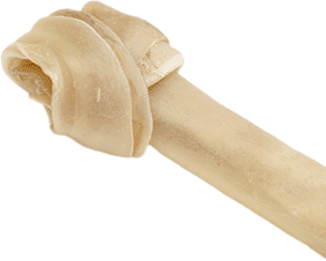


You walk through your front door, and suddenly it hits you: Eau de dog — or, perhaps more familiarly, dog perfume. And while we love our canine pals, it’s safe to say no one will be creating a perfume that harnesses their unique aroma.
When your home starts to smell like a dog, it’s obviously time for your pup to take a bath. But in most cases, owners will try to beat the stink before it permeates throughout their living space.
Excessive bathing can ruin a dog’s coat by stripping away its natural oils and creating itchy skin. On the other hand, infrequent baths can make the scent of a dog linger. As a Labrador owner, you must find a happy medium for bathtime so your pup smells clean and fresh while maintaining its healthy, silky coat.
So, how often should you bathe a dog? And more importantly, how do you comfortably bathe a large-sized dog like a Labrador Retriever? Don’t worry — bathing your pup isn’t as intimidating as it might seem.
Yes! Most Labs love swimming around in the water. The reason this dog breed enjoys bath time dates back to the history of the Labrador Retriever.
In the 1700s, Newfoundlander fishermen bred local working dogs with the Newfoundland breed and created a new dog breed: The St. John’s water dog. This breed rapidly increased in popularity due to its innate ability to retrieve items from the water and swim.
Later on, through additional breeding efforts, the Labrador Retriever was created. While historians have difficulty pinpointing the exact date of the Labrador breed, we know our water-loving canine friends descended from the since-extinct St. John’s water dog.
Our beloved canine pal was first introduced to the world with the Labrador name by the Earl of Malmesbury in the mid-19th century. Soon enough, buyers from around the globe noticed the breed’s potential. Everyone wanted this loyal, water-resistant, fetching dog to help with their fishing needs.
It’s safe to say, with a bloodline well-known for swimming, most Labs will jump at the chance to be in the water!
In other words? This breed’s water-loving history makes bath time easy for Lab owners.
The frequency in which you need to bathe a lab depends on the amount of time they spend outside and their affinity for dirt. Many Labradors will sprint and jump into the nearest mud puddle without a second thought — usually meaning you’ll be rinsing them off frequently.
If you have a yellow or white Lab, it will be easy to see dirt on their coat after their latest venture outside. But if you have a chocolate or black Lab, it’s a little more complicated to gauge just how dirty they are. Unless you see them rolling around in the dirt, you might not be able to tell they need a bath until the smell hits you.
Typically, a Labrador Retriever should bathe once every four to six weeks. A regular bathing schedule will help keep a dog’s coat shiny and healthy while subduing the prominent dog smell.
But beware: When it comes to dogs with a double coat (like our Labrador friends), overbathing can cause dry skin and remove essential oils from their fur. These oils are vital since they help dogs regulate their body temperature.
If you find that your Lab needs baths more frequently than the recommended four- to six-week period, consult with a licensed veterinarian about dog shampoo options. The vet can offer specific gentle shampoo recommendations that help maintain the natural oils while leaving your dog fresh and clean. Waterless baths and wipes can also assist with cleanup in between baths.
First and foremost, one of the biggest benefits of regular Labrador bathing is eliminating the funky smell of a dirty dog. You’ll be able to snuggle up to your pup without plugging your nose — but the benefits of bathing don’t stop there.
Labrador Retrievers have a double coat that sheds year-round, with two major shedding seasons ahead of the summer and winter months. A regular bath will help manage the shedding by removing excess hair in a controlled space. While you’ll likely still find hair around the house, it will be much more manageable with frequent bathing.
If your dog goes outside frequently, you’ll want to use bath time as an opportunity to check for any unfriendly pests burrowing within a Lab’s coat, especially ticks. When left untreated, dogs can become ill following a tick bite, so Labrador owners should be diligent about brushing and bathing after an extensive time outside in heavy brush.
Bathing a pup is a great socialization experience for you both. Dogs need to allow humans to touch their paws, ears, legs, and tail without becoming distressed or upset. When starting at a young age, you’re showing your pup that bath time can be great one-on-one time with a trusted person.
Quick Tip: It will also be much easier to trim your dog’s nails when he’s comfortable with being handled during grooming sessions!
If bath time feels like a chore for you, know that your dog likely feels the same. It’s not always a fun activity. After all, some dogs would prefer a mud bath over sudsy bubbles!
However, if you begin bathing your dog at a young age, it will slowly become comfortable with bath time. Just be sure that bath time is enjoyable – otherwise, your pup will loathe getting in the tub.
Keep these tips in mind as you adjust your Labrador puppy to bath time:
If you prefer taking your pet to a groomer for baths, you’ll need to find a trustworthy individual who responds well to your dog.
This is important because if your Lab has a bad experience at the groomer, they won’t want to return. And if your dog has multiple bad experiences as a groomer, it will make bath time incredibly difficult, even when they’re just at home with you.
In fact, it could even make your loveable, friendly dog wary of strangers in general.
Watch for signs that your pup is anxious immediately before or after their visit to the groomer since this could mean you need to find a new shop to visit. The last thing a pet owner needs is a smelly dog that is apprehensive about bathing!
Did you know dogs under a year and a half can get seriously injured much easier?
At this stage of development, puppies haven’t fully formed their adult bones yet. Instead, they have growth plates, which are small areas of cartilage that serve as a placeholder until their bone structure grows.
A growth plate injury can significantly affect how a puppy’s bones grow. In severe cases, this could mean that your dog can develop an uneven limb. If your Labrador puppy slips and falls while trying to jump out of the tub, it could result in a growth plate injury.
When bathtime is over, a ramp can help wet dogs get out of the tub without jumping over the side. Ramps keep dogs from injuring themselves or you — meaning no more bending over and physically picking your large pup out of the tub!
You may also consider using a dog brush that won’t irritate dry or sensitive skin to brush away any knots during bathing. With these options, you’ll ensure your pup’s safety and beat the wet dog smell from persisting following a bath.
Labrador Bathing Tip #3: Avoid Soap Contact with the Your Dog’s Ears and Eyes
Avoid getting soap suds in your dog’s ears and eyes. Your furry friend will avoid bathing if they remember painful experiences associated with the bath and could develop frequent ear infections from excess soap.
And not only will your Lab pup hate bathtime, but residue water can result in ear infections.
If this is a concern, try face shampoos for dogs or even human baby shampoo if you have concerns about soap getting into your dog’s eyes or ears.
There are also plenty of tools that help make bathtime easy for dogs and their owners. For example, a detachable showerhead allows free movement around the tub so that you can wash off the suds quickly and efficiently.
Labrador Bathing Tip #4: Adhere to the Three T’s of Bath Time
When bathing a Labrador, it’s essential to provide lots of positive reinforcement. Doing so will ensure that your dog is eager to take a bath. Here are the three critical components that help make bathing fun:
Talking to your pup during a bath will make them happy. Labradors especially adore praise and positive attention. Throw in lots of “good boy!” or “good girl!” compliments, and you’ll have a well-behaved dog that is always excited for bath time.
Give your dog a water-resistant toy while they are being scrubbed down. The toy should be entertaining and only obtainable during bath time. Presenting your pup with this special bath toy will strengthen their positive association with the tub and keep them occupied while you hose them down.
Why is it essential to have an exclusive bath toy? Well, toys that are frequently available lose their appeal after a while. However, if your dog expects to play with a specific toy during bath time, it makes them more likely to hop in the tub.
After a bath, your pup deserves a treat for its excellent behavior in the tub. Make sure to provide them with their favorite treat, be it peanut butter or a name-brand dog snack. While you present the treat to your dog, throw in an extra “good boy” or “good girl” to let them know you are happy with their behavior.
Sometimes, dogs have a chronic smell that just won’t go away after a good scrub.
If this is the case with your Labrador Retriever, you may want to schedule a visit with your local veterinarian because there may be underlying medical issues causing a lingering odor to persist after a bath.
Here are some of the most common reasons Labs still hold onto a nasty smell after bath time.
Sometimes, your pup’s diet may be to blame: If you have recently changed pet food brands or if the food has changed formulas, your pet may have increased flatulence.
However, if you haven’t changed your dog’s food and the ingredients are still the same, discussing dietary options with your local vet may be beneficial. Your dog may experience allergies and have grown an intolerance to one of the primary ingredients in its regular food.
If an unpleasant smell lingers following a bath, it might be time to have a veterinarian examine their anal glands. Animals have fluid from their rectum that releases during their bowel movements, but these glands can become impacted for some pets.
This issue is often paired with that infamous “scooting behavior,” which is a tell-tale sign of your pup having problems with its rear. You’ll want to visit a professional so they can express the glands and empty them of fluid build-up.
If you notice a distinct smell coming from your dog’s mouth, they may have issues with their teeth. As plaque builds up, teeth and gum health declines, resulting in an unpleasant smell.
Unfortunately, the American Veterinary Dental Society predicts that 80% of canines will develop some form of Periodontal Disease in their lifetime. To avoid this, you’ll want to incorporate brushing your dog’s teeth into their bathtime routine.
Every dog has a form of healthy yeast on its skin. However, sometimes the yeast can get out of control and cause a nasty fungal infection. An overgrowth of yeast can cause excessive skin issues like irritation, dandruff, thickened skin, or a putrid smell.
Bacterial infections are often caused by underlying medical issues like parasites, allergies, or autoimmune diseases. If your dog’s skin appears inflamed, flaky, or you notice profuse scratching, you’ll want to take your pup in for a check-up and diagnosis.
A stinky dog’s smell is enough to turn anyone away from your home, so it’s important to bathe your Lab once every four to six weeks to avoid their potent dog odor.
The good news is that when you adopt a Lab puppy from a reputable breeder, you don’t have to worry about bathtime: Your new addition will have prior experience with human touch and bath essentials. That’s because Snowy Pines works with each of our White English Lab puppies to ensure they are ready to integrate into your home, meaning you won’t be fighting to get these adorable dogs soaped up and clean come bath time.
If you’re hoping to add a new pal to your household, check out the available White Lab puppies from the experts at Snowy Pines. (Plus, with a coat as white as snow, you’ll know exactly when your pup needs a bath!)